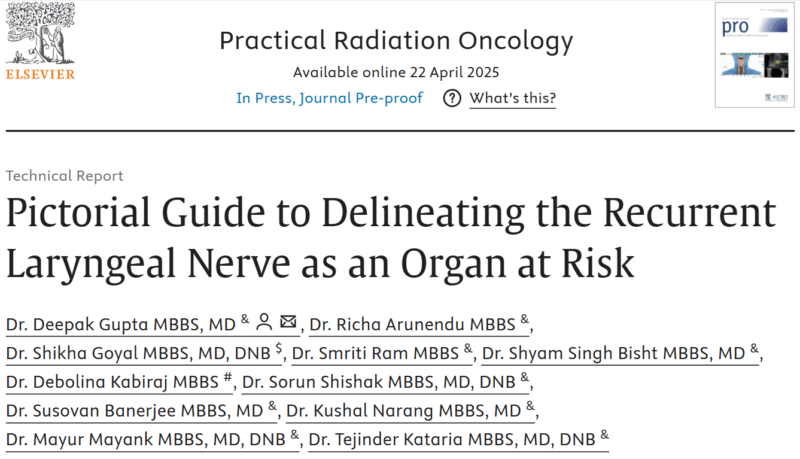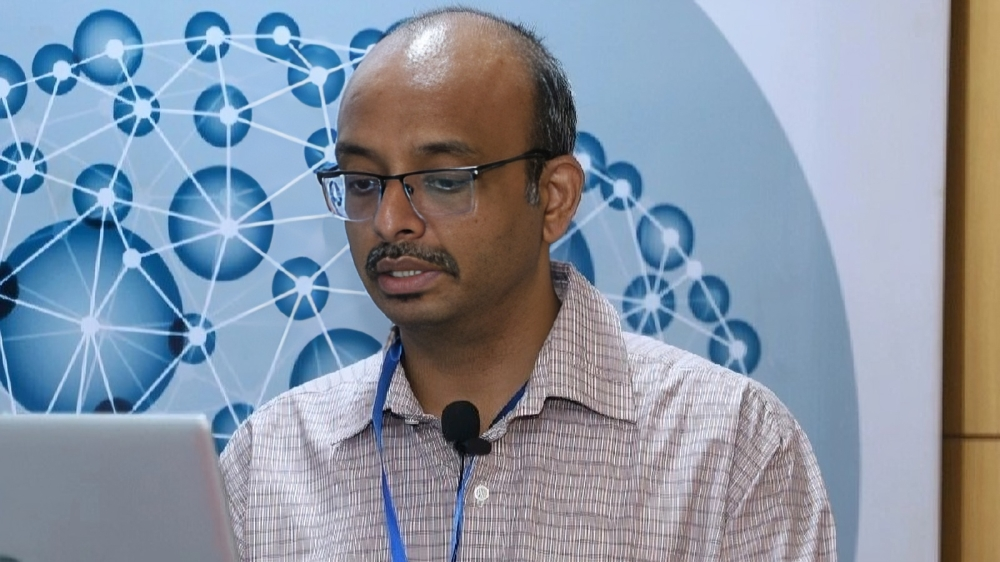Deepak Gupta, Associate Director of the Medanta Hospital (Gurgaon), shared a post on LinkedIn about a paper he co-authored with colleagues published in Practical Radiation Oncology:
“OAR – Recurrent Laryngeal Nerve Pictorial Guide.
The recurrent laryngeal nerve (RLN) innervates the vocal cords, and injury to it can lead to hoarseness, voice loss, swallowing difficulties, or even airway compromise.
During high-dose radiotherapy like stereotactic body radiotherapy (SBRT) or reirradiation, especially when targeting thoracic tumors (like near the trachea, esophagus, or apex of the lung) or head and neck cancers, the RLN is at risk because:
It runs close to radiosensitive structures.
It has limited capacity for repair if damaged.
Dose Constraints and Risk Factors
1. Dose Constraints (based on available data and extrapolations from nearby structures):
No formal, universally accepted dose constraint yet for the RLN.
However, by analogy to other cranial nerves:
Maximum dose (Dmax) to cranial nerves should ideally be < 66–70 Gy (in standard fractionation).
In SBRT (hypofractionated) settings: try to keep Dmax < 20–24 Gy in single-fraction or < 30–34 Gy over 3–5 fractions (adjusted for biologically effective dose, BED).
2. Risk Factors for RLN Injury:
High total dose (> 66 Gy EQD2) to nearby structures.
Reirradiation, where the cumulative dose exceeds the nerve’s repair ability.
Large fraction sizes (hypofractionation/SBRT) leading to higher per-session nerve damage.
Tumor location: tumors at or near the thoracic inlet, tracheoesophageal groove, or upper mediastinum.
Proximity without adequate margin: if RLN is within the high-dose target volume or near steep dose falloff zones.
Prior surgery or existing scarring: previous interventions can make the nerve more vulnerable.
3. Strategies to Minimize RLN Injury:
Careful contouring: attempt to delineate the RLN course near the tracheoesophageal groove (though difficult on CT, sometimes better with MRI).
Dose sculpting techniques: using IMRT/VMAT/rapidarc or SBRT with strict organ-at-risk (OAR) constraints.
Fractionation: lower per-fraction dose if possible when near critical nerves.”
“Pictorial Guide to Delineating the Recurrent Laryngeal Nerve as an Organ at Risk”
Authors: Deepak Gupta, Richa Arunendu, Shikha Goyal, Smriti Ram, Shyam Singh Bisht, Debolina Kabiraj, Sorun Shishak, Susovan Banerjee, Kushal Narang, Mayur Mayank, Tejinder Kataria.

More posts featuring Deepak Gupta.
